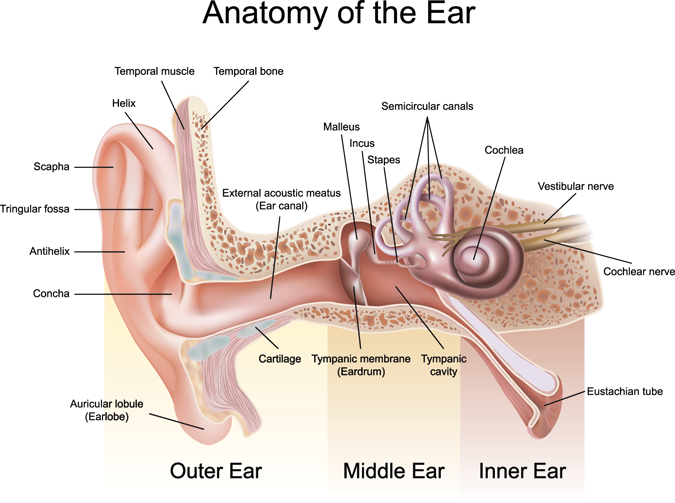Does My Child Have an Ear Infection?
Before a toddler can speak, some ailments are easier to identify than others. Your baby doesn’t need to have any sort of vocabulary for...
Posted on March 11, 2017
Ear InfectionsIf your child has frequent ear infections, you are not alone. The American Speech-Language-Hearing Association says it is the most common childhood illness (other than colds) for infants and young children. Ear infections occur most frequently between the ages of 3 months and 3 years, but are common until the age of 8. Five out of six children will have at least one ear infection before their third birthday and nearly 40% of children will have three or more ear infections before that age.
Why are ear infections so common?
Basically, ear infections are common because the tubes and spaces in children’s ears are so small. When a child gets a cold, sore throat or upper respiratory infection, bacteria from those illnesses can spread to the middle ear. The bacteria causes fluid to build up in the middle ear (the space behind the ear drum), it becomes infected, the eardrum becomes inflamed, and bingo, you have an ear infection.

The pathway that the bacteria takes to get to the ear is called the Eustachian tube. It runs from the top of the back of the throat to the ear and is designed to clear fluid from the ear. However, in infants and children, this tube is nearly horizontal so it fills up with fluid easily. As we age, the tube becomes more vertical, works more effectively and that is why the older we are, the fewer ear infections we get.
3 types of ear infections
Medically speaking, an ear infection is called Otitis Media and there are three types:
In addition to contracting a cold or upper respiratory infection, there are two other reasons why your child may get frequent ear infections:
A young immune system: A child’s immune system is young and not as strong as that of an adult. That can make it difficult fight off infection.
Tonsils and adenoids: The adenoids are a flap of tissue at the top and back of the throat, considered the uppermost tonsil. Bacteria can get trapped in the adenoids and when it does it can cause an infection that moves through the Eustachian tubes to the middle ear.
Symptoms of an ear infection
If your child gets frequent ear infections you probably know the symptoms well:
What are the best treatments for ear infections?
Some ear infections get better on their own. Others need to be treated with an antibiotic. Always discuss antibiotic use with your ENT doctor to make sure that your child is taking them only when needed. There is always the risk that bacteria will develop a resistance to frequently used antibiotics.
Treatments for ear infections can include:
Can frequent ear infections be prevented?
Sometimes. The key to preventing frequent ear infections is to make sure that the home environment is as clean as possible and that your child is not exposed to a lot of colds during the first year of life. Other preventions that you can take include:
Researchers sponsored by the National Institute on Deafness and Other Communication Disorders (NIDCD) are working to further understand ear infections, their prevention, diagnosis and treatment. They are trying to find better ways to predict which children are at higher risk for ear infections in order to prevent them.
In the meantime, the pediatric ENT doctors can help treat your child’s ear infections. We are trained in diagnosing and treating pediatric ear infections, chronic runny nose, recurrent sore throats and snoring. We will discuss with you the best treatments to reduce frequent ear infections, whether it is medication, imaging or surgery. We can place ear tubes to reduce fluid buildup and we can remove tonsils and adenoids.
References
Causes of Hearing Loss in Children
Ear Infection Overview
Ear Infections in Children
Before a toddler can speak, some ailments are easier to identify than others. Your baby doesn’t need to have any sort of vocabulary for...
Summer has just arrived and with it comes lots of fun in and visits to pools. That got us thinking about swimmer’s ear and...